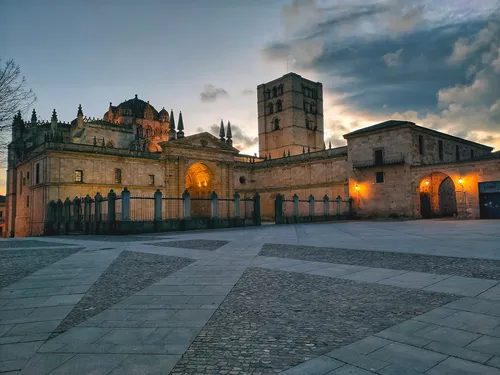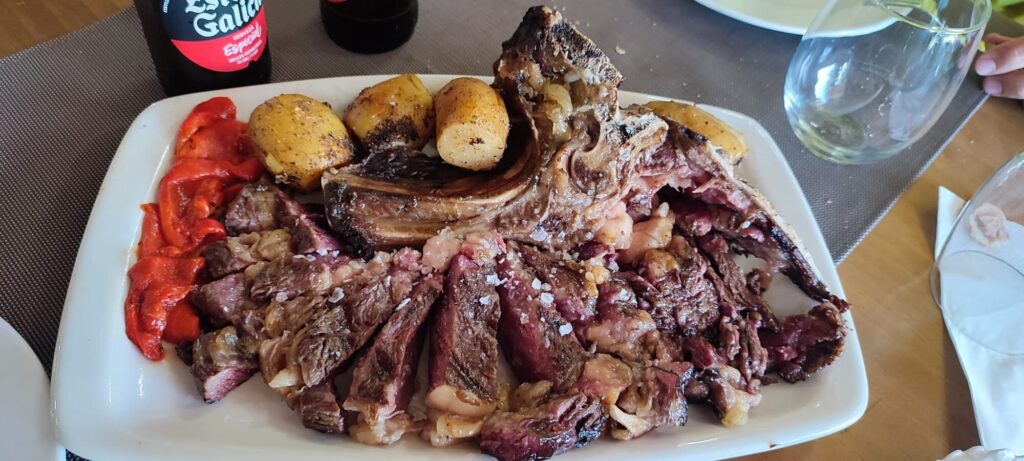Nestled along the tranquil banks of the Duero River, Zamora offers a window into Spain’s medieval soul—its skyline pierced by Romanesque church towers, its streets echoing with legends of knights, monks, and centuries-old markets. This Zamora Spain travel guide unveils a destination untouched by mass tourism, where stone bridges, tapas bars, and family-run wineries promise a journey both authentic and unforgettable.
🕍 Discover Zamora’s Romanesque Marvels
Begin your Zamora Spain travel guide with the city’s unrivaled collection of Romanesque architecture—arguably the finest in all of Spain. With over two dozen Romanesque churches, the city feels like an open-air museum. The crown jewel is Zamora Cathedral, crowned with a Byzantine-style dome and standing tall since the 12th century. Nearby, Iglesia de San Claudio de Olivares charms with its simplicity and weathered stone, while Santa María la Nueva echoes stories of fire and rebirth from the medieval past.

🏰 Walk the Walls of Time
Zamora’s medieval walls, still intact in large sections, offer a unique opportunity to walk along the very same stones that once protected the city from Moorish sieges. Enter through the Puerta del Obispo, and ascend to the Castle of Zamora—a fortress with thick battlements, panoramic viewpoints, and tranquil gardens where the wind whispers ancient tales. These elevated paths reveal sweeping views of terracotta rooftops, church domes, and the winding Duero below.
🎨 Stroll Through the Historic Old Town
Wander through cobbled alleys where antique lamplight flickers and stone archways open to hidden courtyards. The Plaza Mayor, framed by arcades and 15th-century façades, pulses gently with local life. This Zamora Spain travel guide recommends visiting Mercado de Abastos, a local market where farmers offer cured cheeses, pimentón, and olives from the Castile and León region. Each corner reveals a new layer of heritage—an engraved door lintel, a carved saint, a whisper from another era.
🍷 Explore the Duero Wine Route
Zamora is a gateway to the Toro wine region, renowned for bold red wines made from the native Tinta de Toro grape. This Zamora Spain travel guide encourages visitors to venture into nearby vineyards such as Bodega Fariña or Bodegas Rejadorada for tastings paired with Manchego cheese and jamón ibérico. Touring these historic bodegas offers insight into centuries-old wine traditions thriving amid rolling sun-kissed hills.
🖼️ Visit Zamora Museum & Semana Santa Center
For a deeper cultural dive, head to the Museo de Zamora, housed in a Renaissance palace. Its archeological treasures and art collections narrate the city’s evolution from Celtiberian settlement to Roman stronghold to medieval center of power. Don’t miss the Semana Santa Museum, which explains the city’s Holy Week processions—an important tradition where religious floats and solemn parades transform Zamora into a stage of spiritual theater.

🚶♀️ Stroll the Duero River Promenade
For moments of quiet reflection, walk along the Paseo del Duero, a peaceful riverfront path dotted with weeping willows and historic bridges like Puente de Piedra, built by the Romans. As the golden Castilian sun dips below the skyline, the city’s ancient stones glow with a honeyed hue, and the river flows like time itself—slow, steady, eternal.
🍽️ Taste Zamora’s Culinary Soul
The cuisine here is as hearty and grounded as the city itself. This Zamora Spain travel guide recommends trying bacalao a la tranca (salt cod in paprika sauce), arroz a la zamorana (rice with pork and sausage), and the famous queso zamorano, a sharp, nutty sheep’s cheese. For dessert, indulge in rebojos zamoranos, sponge-like almond pastries best enjoyed with local sweet wine.
🛤️ Getting to Zamora
Zamora is well-connected yet blissfully off the beaten track. From Madrid-Chamartín, high-speed trains (Renfe ALVIA) whisk travelers to Zamora in just under 90 minutes. Alternatively, buses from Valladolid and Salamanca provide scenic routes through Castile’s plains. Once there, the city is perfectly walkable—its major attractions within strolling distance of each other.
🛎️ Where to Stay: From Paradores to Boutique Inns
Whether you seek monastic stillness or artistic flair, Zamora has the stay for you. This Zamora Spain travel guide recommends Parador de Zamora, housed in a 15th-century palace with tapestries and stone courtyards. For cozy charm, try Hostal Don Rodrigo, just steps from the cathedral, or Ares Hotel, a boutique hideaway with river views and modern comforts.

💰 Budget Planning for Your Trip
While not counted toward the main word count,这里是简要预算建议:
- ✈️ Transportation: High-speed train from Madrid ~$25–35 one-way
- 🛏️ Accommodation: Mid-range hotels $60–90/night;Parador ~$130+
- 🍽️ Food: Local meal $15–20;Tasting menu ~$35
- 🏛️ Attractions: Most churches free;Museums ~$3–5
- 🍷 Wine tasting: ~$10–20 with snacks
- 🚕 Local transport: Mostly walkable;occasional taxi ~$5–10
For updated schedules and entry details to heritage sites, refer to the official Zamora tourism board for the most current information.
For travelers captivated by timeless towns rich in artistic heritage, don’t miss our 🏰 Timeless Kazimierz Dolny Poland Travel Guide: 9 Romantic Escapes into Art, Hills & Vistula Charm — a journey through Vistula valley beauty and painterly streets.
